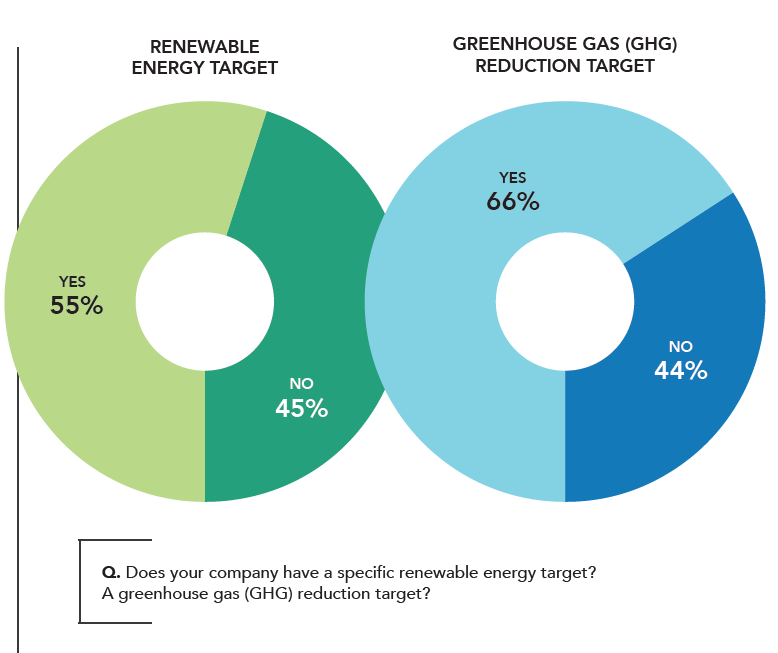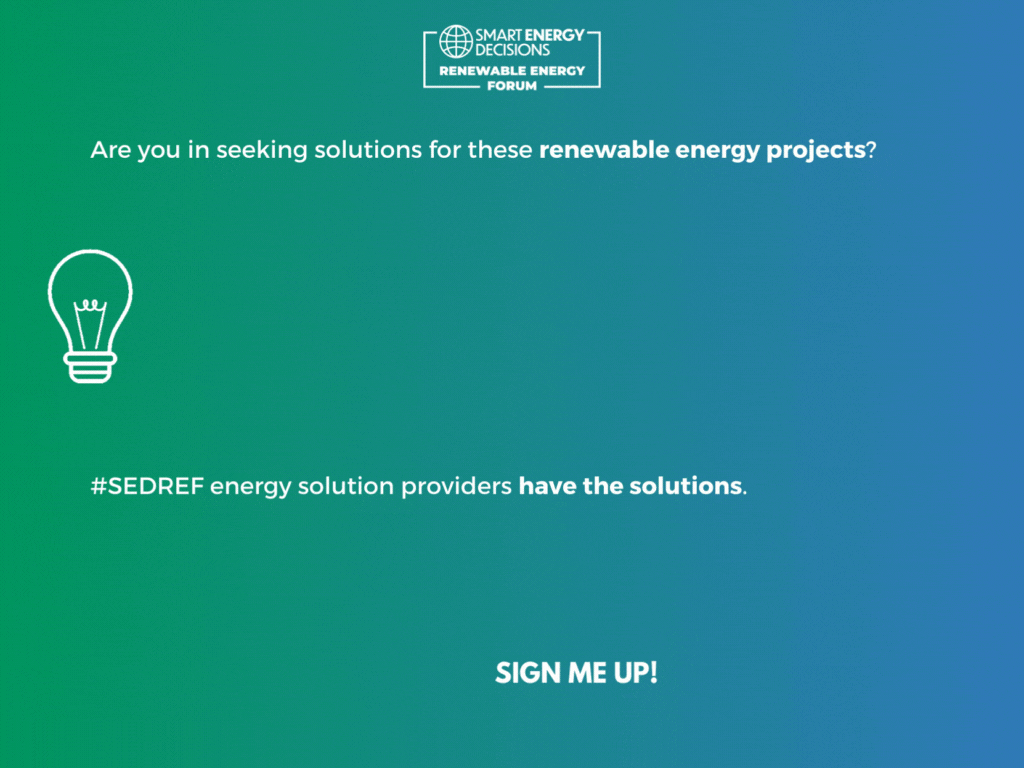Distributed Energy Resources - April 14, 2021 - By NRG Energy, Inc.
Turning Sustainability Goals into Action: DER Survey Insights, Part 4
Meeting emissions reduction targets has significantly increased among organizations as a driver to implemented Distributed Energy Resources (DERs). According to the 2020 “State of Distributed Energy Resources Study,” conducted by Smart Energy Decisions and sponsored by NRG, achieving these goals is one of the top three drivers for installing DERs and has increased by an impressive 17 points from 52% in 2019 to 69% in 2020. More than half of the respondents (55%) stated that they have established renewable energy targets and two-thirds (66%) have set greenhouse gas reduction goals. These results are a clear indication that businesses are much more invested in their sustainability goals.

Further, organizations are making actionable strides to meet those goals. The study also revealed businesses that have already deployed some type of distributed energy resource are more likely to have established definite renewable energy and GHG emissions reduction goals. For example, respondents with on-site solar exceed the average of having renewable goals by 10 points and GHG reduction by 8 points. It is reasonable to conclude that DERs are viewed as a mechanism to make attaining emissions reduction goals more realistic.
There is a wide and growing variety of DER instruments to achieve GHG reductions and renewable targets. On-site solar is by far the most common but organizations are also deploying electric vehicle (EV) infrastructure, demand response programs, energy storage, CHP/Co-generation, microgrids, and natural gas generators. Deploying DERs to meet sustainability and low carbon goals are no longer “nice-to-have” but are becoming a “must-have.” Large commercial and industrial companies along with institutions and government organizations are more enthusiastic than ever to demonstrate that they are responsible corporate citizens.
Creating objectives and measuring progress is especially important to establish stakeholder approval for DERs. Here are two examples of how organizations turned their ambitions into results. In one case, a small liberal arts college successfully aligned its values and existing sustainability initiatives to meet new targets. Building on a long tradition of environmental stewardship, NRG’s team of experts worked with the college to build 5,505 solar panels on land leased from the school. The solar project generates 1.9 MW of clean energy, diversified its energy supply, and added 2.5 million kilowatt-hours of renewable electricity annually to the state. Further, a multi-year agreement allows the institution to purchase all electricity at a predetermined rate to save money in the long term and avoid future market volatility.
In another case, a major U.S. city wanted to lower its greenhouse gas emissions, improved resiliency, and reduce energy usage by 30%. Another priority was to develop an emergency recovery system to ensure the clean water supply would be safe and available in case of storms or other disruptive events. NRG took a fully integrated approach with a large-scale emergency backup generation network with 24/7 dependability. A three-year electricity plan enabled the expansion of renewable energy credit (REC) purchases from 37% to 50% and the public-private partnership resulted in the city’s first electric vehicle infrastructure. A tailored 20-year service agreement that required no upfront capital, saved the city $40 million. An additional $90 million was saved over a three-year electricity supply agreement.
Businesses have choices in how they tie reduced GHG and renewable aspirations to DERs. Solutions can be layered together to meet goals, starting with a low-cost demand response programs, which requires no capital output while generating revenue, to more sophisticated and fully integrated power strategies. By working with an experienced partner who understands your objectives and has broad-scope market intelligence, businesses can optimize a mix of energy management tools to demonstrate the ROI of running sustainable, reduced carbon operations.
Read more in the 2020 State of Distributed Energy Resources Study.
At NRG, we’re bringing the power of energy to people and organizations by putting customers at the center of everything we do. We generate electricity and provide energy solutions and natural gas to millions of customers through our diverse portfolio of retail brands. A Fortune 500 company, operating in the United States and Canada, NRG delivers innovative solutions while advocating for competitive energy markets and customer choice, working towards a sustainable energy future.
Share this valuable information with your colleagues using the buttons below:
« Back to ColumnsStay Up-To-Date












